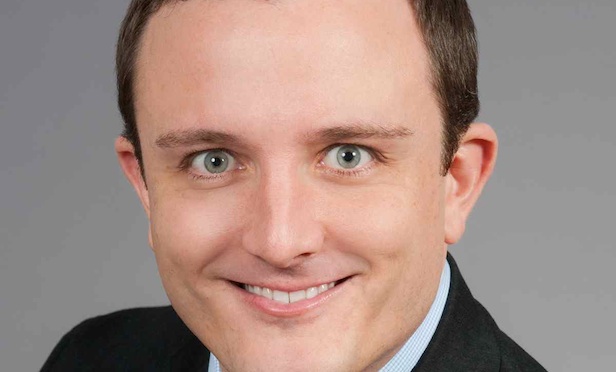
BOSTON—Seniors housing continues to outperform other asset classes, posting total returns at 16.1%, 17%, and 15.3% over a one, three and five-year period, respectively, according to the newly released CBRE seniors housing & care investor survey.
“The survey, which was sent to the most influential US seniors housing investors, developers, lenders and brokers, provides a snapshot of market participants' expectations, and most importantly, their perception of what lies ahead,” says Zach Bowyer, national practice Leader for CBRE's seniors housing specialty practice.
This year can be best summarized as “the year of the snake,” the H1 2016 Mid-Year Update states. Transaction volume hit all-time highs in 2014 and in the first half of 2015, which was driven by the low cost of capital and an unquenchable thirst for yield. Large portfolio transactions by the public REITs drove record setting deal volume and pushed pricing to record levels.
Like a snake who's ingested an animal, CBRE says, REITs became relatively quiet in the first half of 2016 as they processed their expanded portfolios and external market forces also set in which impacted their ability to consume.
Institutional investors and equity funds remained in the game. Their investments have been more selective and focused on Class A assets in core markets where exit liquidity is higher, or new construction where market value far exceeds replacement cost. “CBRE expects to see an uptick in transaction volume from these investors, with some larger portfolios changing hands, as we move through the second half of 2016,” says Bowyer.
Direct investment into US commercial real estate assets declined by 16% YoY in H1 2016, primarily in Q1. The trend reversed in Q2 with positive growth reported at 9%. Total H1 2016 US transaction volume was $219.2 billion.
The seniors housing sector followed suit, with transaction volume dropping to $6.65 billion in H1 2016, from $8.2 billion in H2 2016, and $13.5 billion in H1 2016. Much of the decline in volume was due to the drop in the public company buyer type, and in particular, the public REITs.
The change in capitalization rates was noticeable compared to prior survey results, signaling that the market cycle may have reached a peak and is beginning to shift. The largest increase was reported for class C independent living and assisted living properties, at +21 bps and +35 bps, respectively.
In addition to seniors housing continuing to outperform other asset classes, results of CBRE's mid-year survey also show that total multifamily returns were 12%, 10.9%, and 11.9% over the same periods. Moreover, the NCREIF Property Index, consisting of core institutional property markets in the US, averaged 13.3%, 12%, and 12.2% over the same periods.
Over the next 12-month period, 48% of survey respondents expect no change in cap rates, while 45% expect an increase in cap rates. Coupled with the increase in percentage of investors expecting no change in their exposure to seniors housing over the next 12 months, this indicates an increase in market uncertainty or a “wait and see” market environment, the report notes.
Publicly traded REITs had less of an impact on pricing in H2 2015 and H1 2016 but their successful push to gain liquidity by divesting less than favorable assets, coupled with global turmoil keeping interests rates down, appears to have the public REITs again looking to be in the driver's seat for acquisitions.
The H1 2016 survey results reflect a clear shift in expectations, with market participants reporting a consistent increase in cap rates for seniors housing properties from H2 2015. The largest increase was reported for class C independent living and assisted living properties, at +21 bps and +35 bps, respectively.
“As investors moved to less risky positions, pricing for the Class A core product remains competitive with a softening class B and C market,” says Bowyer. He notes that the survey showed spreads between core and non-core properties also increased for every sub-property type, except nursing care.
In order to meet the needs and demands of the changing healthcare industry, real estate professionals need to adapt their strategies to new circumstances. Join us at RealShare Healthcare Real Estate on Dec. 7 and 8 for insights on succeeding in both the right markets and product types as well as navigating and finding opportunities in the more challenging ones. Learn more.

BOSTON—Seniors housing continues to outperform other asset classes, posting total returns at 16.1%, 17%, and 15.3% over a one, three and five-year period, respectively, according to the newly released CBRE seniors housing & care investor survey.
“The survey, which was sent to the most influential US seniors housing investors, developers, lenders and brokers, provides a snapshot of market participants' expectations, and most importantly, their perception of what lies ahead,” says Zach Bowyer, national practice Leader for CBRE's seniors housing specialty practice.
This year can be best summarized as “the year of the snake,” the H1 2016 Mid-Year Update states. Transaction volume hit all-time highs in 2014 and in the first half of 2015, which was driven by the low cost of capital and an unquenchable thirst for yield. Large portfolio transactions by the public REITs drove record setting deal volume and pushed pricing to record levels.
Like a snake who's ingested an animal, CBRE says, REITs became relatively quiet in the first half of 2016 as they processed their expanded portfolios and external market forces also set in which impacted their ability to consume.
Institutional investors and equity funds remained in the game. Their investments have been more selective and focused on Class A assets in core markets where exit liquidity is higher, or new construction where market value far exceeds replacement cost. “CBRE expects to see an uptick in transaction volume from these investors, with some larger portfolios changing hands, as we move through the second half of 2016,” says Bowyer.
Direct investment into US commercial real estate assets declined by 16% YoY in H1 2016, primarily in Q1. The trend reversed in Q2 with positive growth reported at 9%. Total H1 2016 US transaction volume was $219.2 billion.
The seniors housing sector followed suit, with transaction volume dropping to $6.65 billion in H1 2016, from $8.2 billion in H2 2016, and $13.5 billion in H1 2016. Much of the decline in volume was due to the drop in the public company buyer type, and in particular, the public REITs.
The change in capitalization rates was noticeable compared to prior survey results, signaling that the market cycle may have reached a peak and is beginning to shift. The largest increase was reported for class C independent living and assisted living properties, at +21 bps and +35 bps, respectively.
In addition to seniors housing continuing to outperform other asset classes, results of CBRE's mid-year survey also show that total multifamily returns were 12%, 10.9%, and 11.9% over the same periods. Moreover, the NCREIF Property Index, consisting of core institutional property markets in the US, averaged 13.3%, 12%, and 12.2% over the same periods.
Over the next 12-month period, 48% of survey respondents expect no change in cap rates, while 45% expect an increase in cap rates. Coupled with the increase in percentage of investors expecting no change in their exposure to seniors housing over the next 12 months, this indicates an increase in market uncertainty or a “wait and see” market environment, the report notes.
Publicly traded REITs had less of an impact on pricing in H2 2015 and H1 2016 but their successful push to gain liquidity by divesting less than favorable assets, coupled with global turmoil keeping interests rates down, appears to have the public REITs again looking to be in the driver's seat for acquisitions.
The H1 2016 survey results reflect a clear shift in expectations, with market participants reporting a consistent increase in cap rates for seniors housing properties from H2 2015. The largest increase was reported for class C independent living and assisted living properties, at +21 bps and +35 bps, respectively.
“As investors moved to less risky positions, pricing for the Class A core product remains competitive with a softening class B and C market,” says Bowyer. He notes that the survey showed spreads between core and non-core properties also increased for every sub-property type, except nursing care.
In order to meet the needs and demands of the changing healthcare industry, real estate professionals need to adapt their strategies to new circumstances. Join us at RealShare Healthcare Real Estate on Dec. 7 and 8 for insights on succeeding in both the right markets and product types as well as navigating and finding opportunities in the more challenging ones. Learn more.
Want to continue reading?
Become a Free ALM Digital Reader.
Once you are an ALM Digital Member, you’ll receive:
- Breaking commercial real estate news and analysis, on-site and via our newsletters and custom alerts
- Educational webcasts, white papers, and ebooks from industry thought leaders
- Critical coverage of the property casualty insurance and financial advisory markets on our other ALM sites, PropertyCasualty360 and ThinkAdvisor
Already have an account? Sign In Now
*May exclude premium content© 2025 ALM Global, LLC, All Rights Reserved. Request academic re-use from www.copyright.com. All other uses, submit a request to [email protected]. For more information visit Asset & Logo Licensing.








